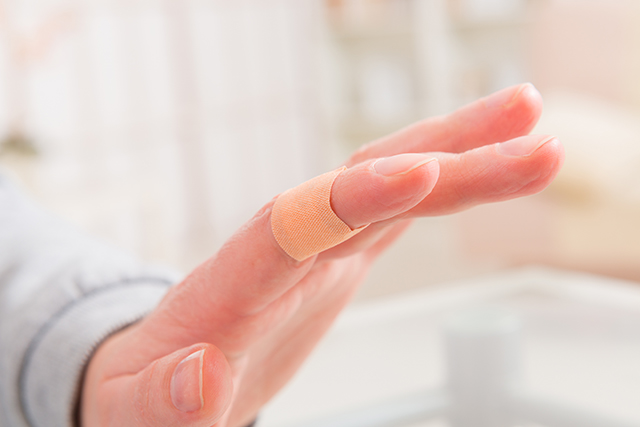Cuts and scrapes are everyday occurrences, and most can be safely treated at home. Knowing how to clean and care for a cut yourself and when to seek a doctor’s care can help reduce infection and speed healing.
Home care for minor cuts
According to the American Academy of Family Physicians, minor cuts can be safely treated at home.
Here’s how to tell if a cut needs medical attention:
- It is deep enough that you can see fat, muscle, or bone.
- The wound has jagged edges or edges that are far apart.
- The wound is long or blood is spurting from it.
Here’s what to do for a minor cut:
- Stop bleeding by putting pressure on the area with a tissue, gauze pad, or clean cloth. The bleeding should stop after a few minutes. If the blood soaks through the gauze or cloth, add more gauze or another cloth and apply more pressure. Don’t remove the gauze or cloth to check to see if it is still bleeding until you have kept the pressure for several minutes. (Removing the cloth too often will cause the clot that is forming to be broken.) If blood spurts from the wound, or it does not stop bleeding after 10 minutes of pressure, seek medical help. You may need stitches.
- After you stop bleeding, rinse the cut thoroughly with cool water. You can either hold the wound under running water or pour water from a cup over the wound.
- Use soap and a soft washcloth to clean the skin around the wound. Try to keep soap out of the wound itself because it can cause irritation. Hydrogen peroxide and iodine will harm living cells and should not be used directly on a wound.
- Use tweezers cleaned in rubbing alcohol to remove dirt, glass, gravel, or other foreign matter remaining in the wound.
- Leave a wound uncovered if it’s in an area where it won’t get dirty or be rubbed by clothing. This will help it stay dry so it can heal faster.
If it’s in an area that will get soiled like your hand, or an area that will be irritated by clothing like your knee, cover it with an adhesive strip. Change the bandage each day—or sooner, if it becomes dirty or wet—to keep the wound clean and dry.
Some wounds like scrapes that cover a large area, should be kept moist to help reduce scarring. Sealed bandages work best for this purpose.
Apply a butterfly bandage to a deeper cut after bleeding has stopped or slowed.
Apply a little antibiotic ointment if the wound was dirty. These ointments may help prevent infection and keep the wound moist to assist the healing process. Some people have a sensitivity to these products and may develop a rash.
When a cut needs more than home care
You should see your health care provider about these cuts if:
- The wound is deep and jagged.
- The wound is on the face.
- The wound is on the wrist, hand, or finger, and any of the joints don’t work.
- The edges of the cut gape open.
- You can’t get dirt out of the cut.
- The cut becomes tender or inflamed.
- The cut drains a thick, creamy, grayish fluid.
- You run a fever of more than 100.4° Fahrenheit (38° Celsius).
- The area around the cut feels numb.
- Red streaks form near the cut.
- It’s a puncture wound or deep cut and you haven’t had a tetanus shot in the last 5 years.
- The cut bleeds in spurts, blood soaks through the bandage, or the bleeding doesn’t stop after 10 minutes of firm, direct pressure.
- The wound is from a human or animal bite.
Taking care of cuts and wounds promptly speeds healing and reduces the chance of permanent scarring.









